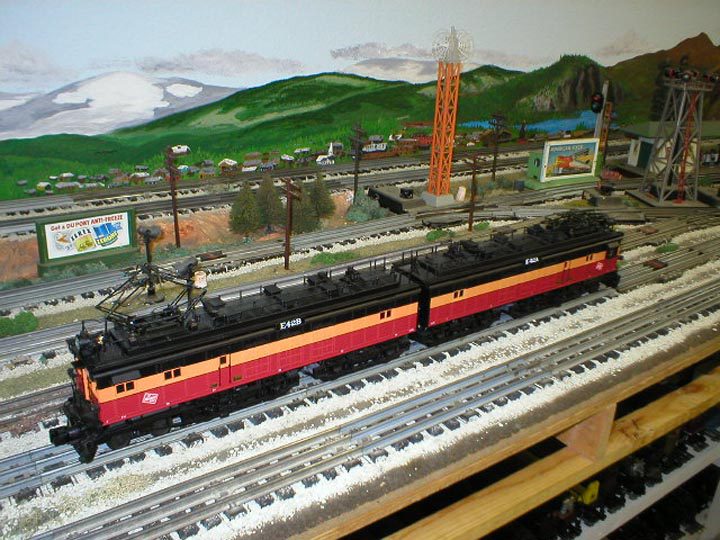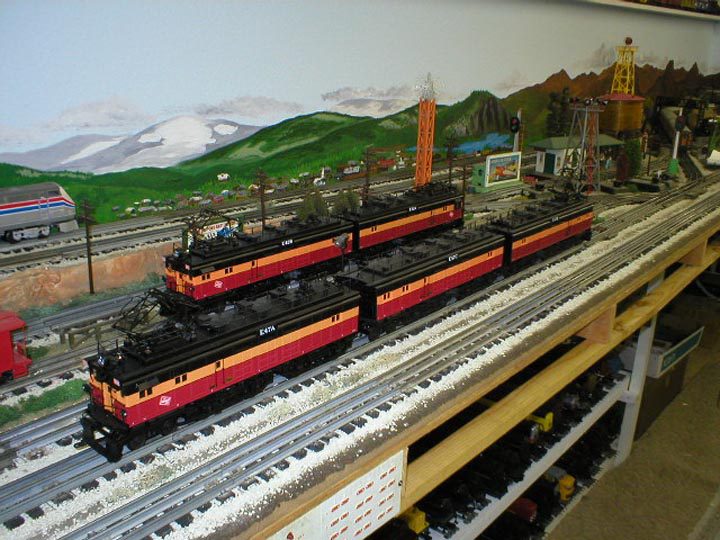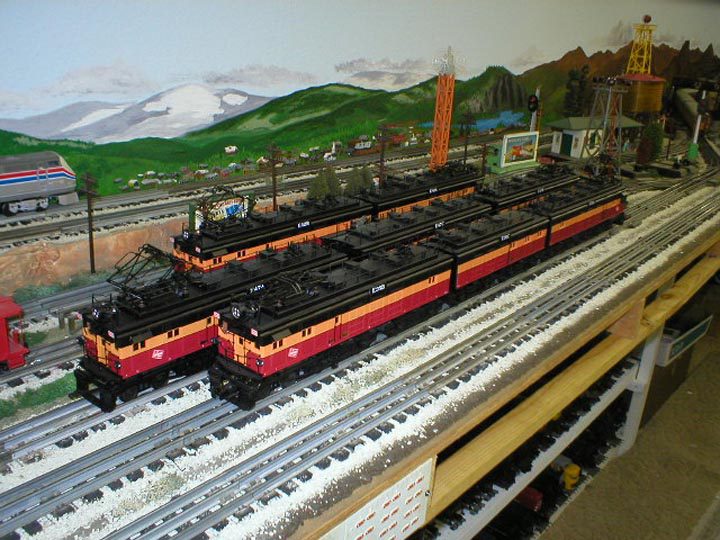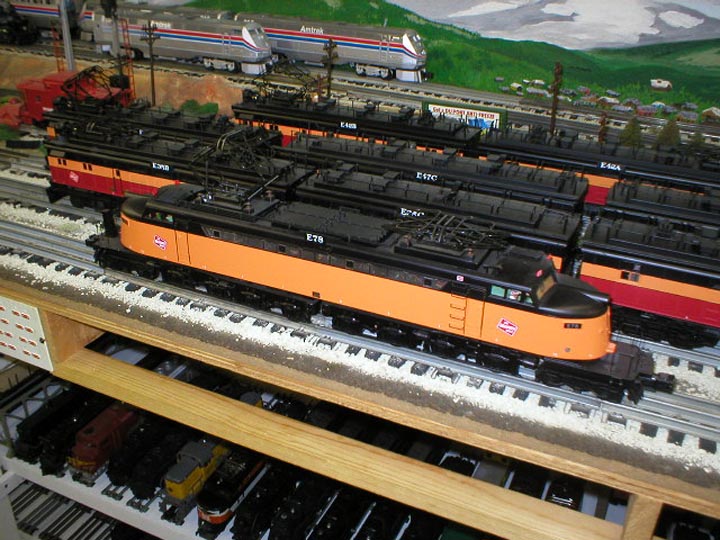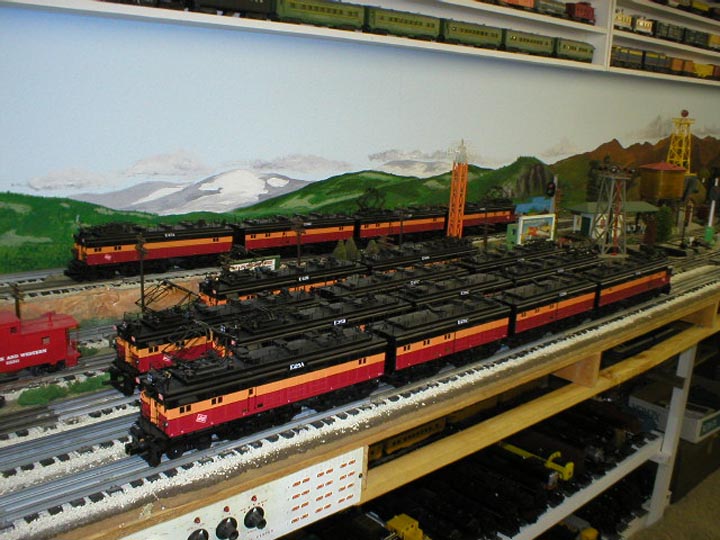Electric Freight Units of the Milwaukee Road
By Mike Stella
I waited patiently for Lionel or K-Line; or Weaver; or anybody; to announce the pending production of the Milwaukee Road’s Box Cabs and when MTH did a few years ago, I broke the bank to add a small fleet of them to my locomotive roster.
These Box Cabs are my #1 all time favorite locomotive and I wanted a good representation of them on “Lionel Lines” (The Largest Lionel Railroad on my Block). I could write volumes about the full size units.
I grew up in Tacoma, the Western Terminus of The Milwaukee Road. The shops were located here and every electric freight unit on the electrified Coast Division called Tacoma home. I remember watching them while growing up in the Pacific Northwest. I took some pictures of units during their final years of life. I remember seeing a few being disassembled at the local scrap yard. I wish I had collected a few “pieces” back then. The Electrics are long gone and so is the entire Milwaukee Road. With the oil problems we face today, I wonder if a transcontinental electric railroad might not be a possible solution? One can dream.
Back in 1915, the newest transcontinental railroad looked to the power of electricity and contracted with General Electric to build 84 electric Box Cabs (The world’s most powerful at that time) and the substations to power them to cross the Rocky Mountains (and the Bitterroots and Belt Mountains) with 440 miles of main line under wires. The locomotives were classified as EF-1s developing 3000 horsepower. The 84 units were coupled together to create 42 Box Cab pairs. The overwhelming success of these lead to the electrification of 212 additional miles on the Coast Division and the requirement for additional locomotives lead to the building of the famous Bi-Polar.
In 1932, the Milwaukee “created” the EF-2 class by breaking up an EF-1 and adding each single unit to the middle of another EF-1. These new three unit monsters developed 5010 horsepower. A few years later, the Milwaukee shops created the EF-3 class by chopping off the control cab and making a shorter “Bobtail” unit as the center unit. The EF-3’s were actually a bit more powerful than the EF-2’s. The final configuration for Box Cabs came about when a four unit locomotive was created beginning in the early 1950’s. These were classified EF-5s. The Milwaukee had already used the EF-4 classification for the “Little Joe’s” that arrived on the property a year earlier.
As the operator of “Lionel Lines”, I could have opted to purchase a single Box Cab locomotive and extra Booster unit from MTH and had the ability to run any configuration by adding or subtracting the middle units. Too much work for me. I purchased enough units to create every class including two EF-5s, one using the Bobtail units and the other using full cab units. While I cannot match the 600+ miles of main line track the Milwaukee had under wire, I do have about two scale miles of Lionel track under wire and this is where the Box Cabs will roam.

